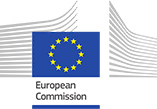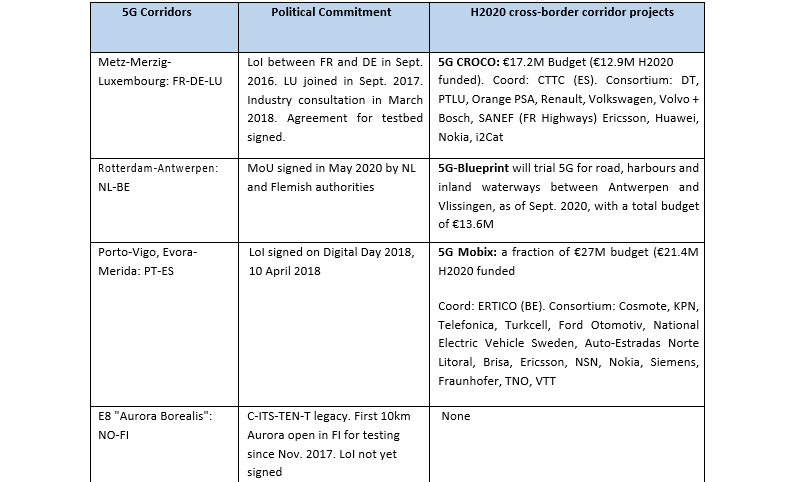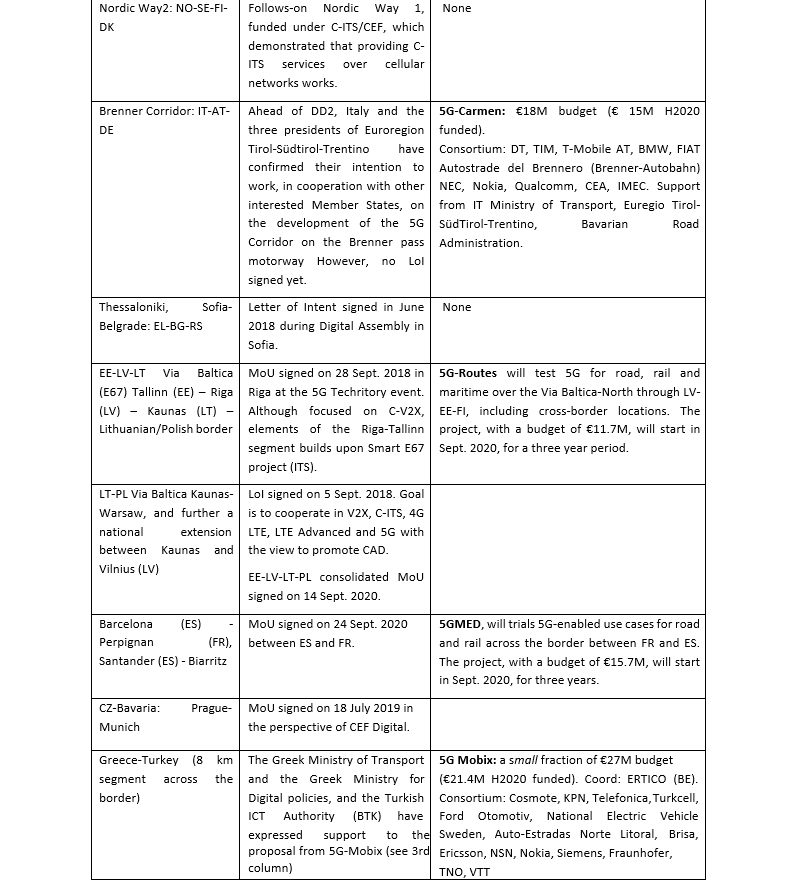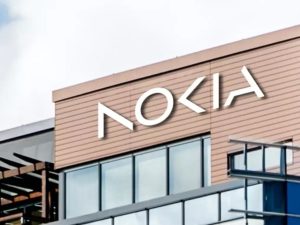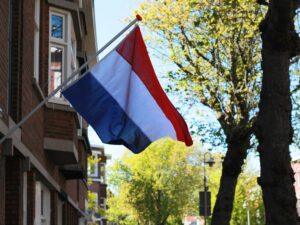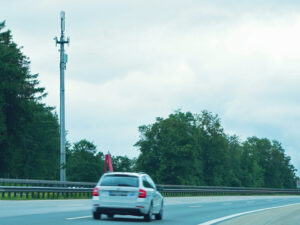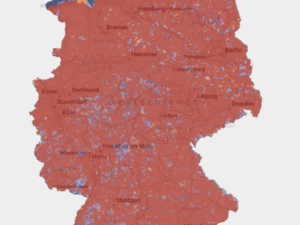The European Commission’s ambition is to focus on these corridors in future EU automated driving projects in the area of digital policies, with links to cybersecurity, privacy, 5G, internet of things, data economy, free flow of data, etc. Twelve “digital cross-border corridors” established inter alia accommodating live tests of 5G for Cooperative Connected and Automated Mobility

Within the European 5G vertical strategy, Connected and Automated Mobility (CAM) is considered as a flagship use case for 5G deployment along European transport paths, in view of creating complete ecosystems around vehicles, from road-safety or digital rail operations to high-value commercial services for road users and train passengers, e.g. mobile office or infotainment.
In order to prepare for the deployment of 5G cross-border corridors for CAM, the MSs signed, in March 2017 in Rome, a Letter of Intent (LoI) with the view to intensify cross-border cooperation for large-scale testing and pre- deployment. This agreement was preceded by bilateral initiatives between Luxembourg, France and Germany, and among the Nordic countries, and has been followed since then by a number of agreements between Spain and Portugal, between Bulgaria, Greece and Serbia, and between Estonia, Latvia, Lithuania and Poland over the “Via Baltica”, with an extension between Lithuania and Poland.
More recently, two agreements – between France and Spain and between the Netherlands and Flanders – were signed, respectively in September 2020 and in May 2020, in the form of MoU. The Netherlands-Flanders agreement concerns the Antwerpen-Rotterdam corridor encompassing road, harbours and inland waterways. The table below presents the situation regarding the on-going initiatives.
5G CAM cross-border corridors
Source: European Commission
The following map displays all the main public-private initiatives in Europe.
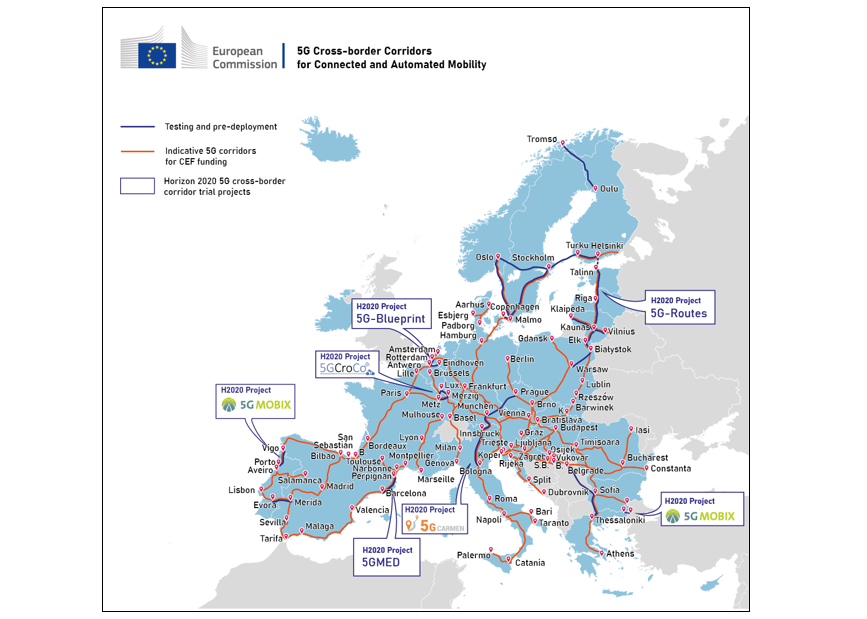
In addition to these initiatives, three Horizon 2020 projects were launched in November 2018 for the conduct of large-scale testing and trials of 5G connectivity for CAM over cross-border corridors, under the umbrella of 5G Public-Private Partnership (5G PPP). Benefiting from a nearly €50 million funding, for a combined total budget of €63 million, the three projects cover three 5G cross-border corridors: Metz-Merzig-Luxembourg (5GCroCo), Porto-Vigo between Spain and Portugal (5G-Mobix), and Bologna-Munich via the Brenner Path (5G-CARMEN). In addition, a small 8 km cross-border segment between Greece and Turkey will be deployed for testing as well.
In September 2020, three new projects were launched and will provide applications in cross-border connected and automated mobility.
- 5GMed will test use cases for connected and automated mobility (CAM), including road and rail, on the basis of the same 5G network infrastructure along the Figueras-Perpignan cross- border
- 5G-Routes will test and validate over 150 km of the Via Baltica corridor, with a ferry extension to Helsinki, including ports and maritime
- 5G-Blueprint will design and validate a technical architecture, business model and governance model for uninterrupted cross-border teleoperated transport for roads and maritime based on 5G connectivity between the ports of Antwerp (Belgium) and Vlissingen (Netherlands).
- Moreover, the forthcoming financial support to a large-scale deployment of 5G corridors under CEF Digital over the 2021-2027 period has further strengthened the momentum. The recent publication by the industry, on 2 October 2020, of a 5G Strategic Deployment Agenda for CAM, with the support of leading European industry associations, and of a 5G SDA on 5G connectivity and spectrum for rail, in April 2020, by European rail associations, will contribute to provide strategic guidance to public and private investment projects in the field in the framework of the new European Partnership for Smart Networks and Services (SNS) that will be set up by the second half of 2021.
The 5G corridors make Europe the biggest experiment area rolling out the 5G technology.
In the context of the round table on Connected and Automated Driving (CAD), the industry has initiated the following cooperation initiatives:
European Automotive – Telecom Alliance (EATA)
The Commission initiated a number of High Level Round Table discussions to strengthen the digital dimension of CAM. These discussions have brought together the industrial players from the digital and automotive sectors to develop joint road maps and establish cross-border deployment actions. Among the main achievements of the Round Table is the creation of the “European Automotive – Telecom Alliance” (EATA) to promote the wider deployment of connected & automated driving (read the announcement) .
The first target of the Alliance is to implement the pre-deployment project for testing CAM in a real setting.
5G Automotive Alliance
In parallel, the industry joined up to create the 5G Automotive Alliance (5GAA) to specifically promote 5G in the automotive sector. A Memorandum of Understanding amongst EATA and 5GAA was signed at the Mobile World Congress (February 2017).
CAR2CAR Consortium
The CAR2CAR consortium focuses on wireless vehicle-to-vehicle (V2V) communication applications based on ITS-G5 and concentrates all efforts on creating standards ensuring the interoperability of cooperative systems spanning all vehicles classes, across borders and brands. The Consortium works in close cooperation with the European and international standardisation organisations like the European Telecommunications Standards Institute (ETSI) and European Committee for Standardisation (CEN).
